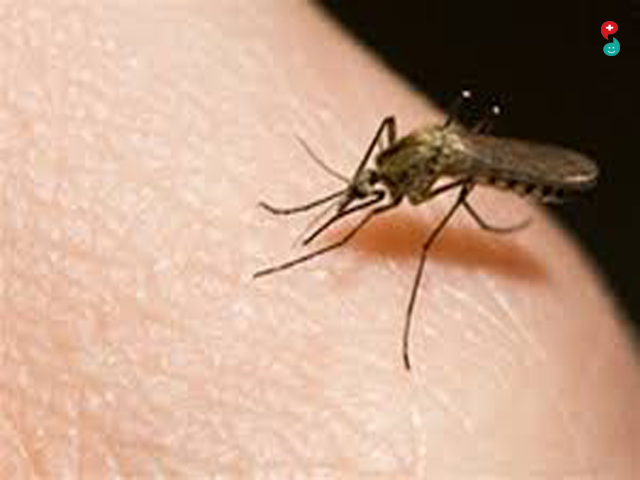
Cerebral malaria is the most common complication and cause of death in severe P. falciparum infection. In falciparum malaria, 10% of all admissions and 80% of deaths are due to the CNS involvement. On the other hand, CNS manifestations are fairly common in malaria and it could be due to not only severe P. falciparum infection, but also high-grade fever and ant malarial drugs. Therefore, it is extremely important to differentiate between these so as to avoid unnecessary anxiety and improper treatment.
Manifestations of cerebral dysfunction include any degree of impaired consciousness, delirium, abnormal neurological signs, and focal and generalized convulsions. In severe P. falciparum malaria, the neurological dysfunction can manifest suddenly following a generalized seizure or gradually over a period of hours.
Causes of neurological manifestations in malaria:
High-grade fever alone can produce impairment of consciousness, febrile convulsions (in children) and psychosis. These manifestations subside with the decrease in the body temperature. Such cases and patients with unimpaired consciousness after seizures tend to have good prognosis.
Antimalarial drugs like chloroquine, quinine, mefloquine and halofantrine also can cause altered behaviour, convulsions, hallucinations and even psychosis. Absence of high-grade fever and of falciparum parasitemia may suggest such a possibility.
Hypoglycemia, either due to severe malaria or due to drugs like quinine, may also present with similar manifestations. Hypoglycemia is more common in pregnancy. It may be worthwhile considering this possibility in ALL cases and to administer 25-50% dextrose intravenously.
Hyponatremia, most often in the elderly and caused by repeated vomiting, is another important cause for neurological manifestations.
Severe anaemia and hypoxemia can also cause cerebral dysfunction, particularly in children.
There could be other causes for neurological dysfunction in patients with malaria like vascular disease, other neurological infections and diseases. Focal neurological deficits, neck rigidity, photophobia, papilloedema and neurological sequelae are very rare in falciparum malaria and such a picture would therefore suggest these other possibilities.
A strict definition of cerebral malaria has been recommended for sake of clarity and this requires the presence of unarousable coma, exclusion of other encephalopathies and confirmation of P. falciparum infection. This requires the presence of P. falciparum parasitemia and the patient to be unrousable with a Glasgow Coma Scale score of 9 or less, and other causes (e.g. hypoglycemia, bacterial meningitis and viral encephalitis) ruled out. To distinguish cerebral malaria from transient postictal coma, unconsciousness should persist for at least 30 min after a convulsion. The deeper the coma, the worse is the prognosis. If necessary, a lumbar puncture should be performed to rule out bacterial meningitis. However, all patients with P. falciparum malaria with neurological manifestations of any degree should be treated as cases of cerebral malaria.[1]
Pathophysiology: Cerebral malaria is the most important complication of falciparum malaria. However, its pathophysiology is not completely understood. The basic underlying defect seems to be clogging of the cerebral micocirculation by the parasitized red cells. These cells develop knobs on their surface and develop increased cytoadherent properties, as a result of which they tend to adhere to the endothelium of capillaries and venules. This results in sequestration of the parasites in these deeper blood vessels. Also, rosetting of the parasitized and non-parasitized red cells and decreased deformability of the infected red cells further increases the clogging of the microcirculation. It has been observed that the adhesiveness is greater with the mature parasites. Obstruction to the cerebral microcirculation results in hypoxia and increased lactate production due to anaerobic glycolysis. The parasitic glycolysis may also contribute to lactate production. In patients with cerebral malaria, C.S.F. lactate levels are high and significantly higher in fatal cases than in survivors. The adherent erythrocytes may also interfere with gas and substrate exchange throughout the brain. However, complete obstruction to blood flow is unlikely, since the survivors rarely have any permanent neurological deficit.
Vascular permeability is found to be mildly increased, however, no definite evidence of cerebral edema has been found on imaging studies. 80% children with cerebral malaria have raised ICT, due to increased cerebral blood volume and biomass rather than increased permeability. The mechanism of coma is not clearly known. Increased cerebral anaerobic glycolysis, intereference with neurotransmission by sequestered and highly metabolically active parasites have been blamed. Cytokines induce nitric oxide synthesis in leukocytes, smooth muscle cells, microglia and endothelium and NO is a potent inhibitor of neurotransmission.
See Pathology
Neurological signs in cerebral malaria:
As per the definition, patient should have unarousable coma, not responding to noxious stimuli with a Glasgow coma scale of <7/15. Mild neck stiffness may be seen, however, neck rigidity and photophobia and signs of raised intracranial tension are absent. Retinal haemorrhages occur in about 15% of cases, exudates are rare. Pupils are normal. Papilloedema is rare and should suggest other possibilities. A variety of transient abnormalities of eye movements, especially dysconjugate gaze, are observed. Fixed jaw closure and tooth grinding (bruxism) are common. Pouting may occur or a pout reflex may be ellicitable, but other primitive reflexes are usually absent. The corneal reflexes are preserved except in case of deep coma. Motor abnormalities like decerebrate rigidity, decorticate rigidity and opisthotonus can occur. Deep jerks and plantar reflexes are variable. Abdominal and cremasteric reflexes are not ellicitable. These signs help in distinguishing from behavioural problems due to fever of other causes.
These patients may also have anemia, jaundice and hepatosplenomegaly.
Investigations: Lumbar puncture and CSF analysis may have to be done in all doubtful cases and to rule out associated meningitis. In malaria, CSF pressure is normal to elevated, fluid is clear and WBCs are fewer than 10/µl; protein and lactic acid levels are elevated.
EEG may show non-specific abnormalities. CT scan of the brain is usually normal.







